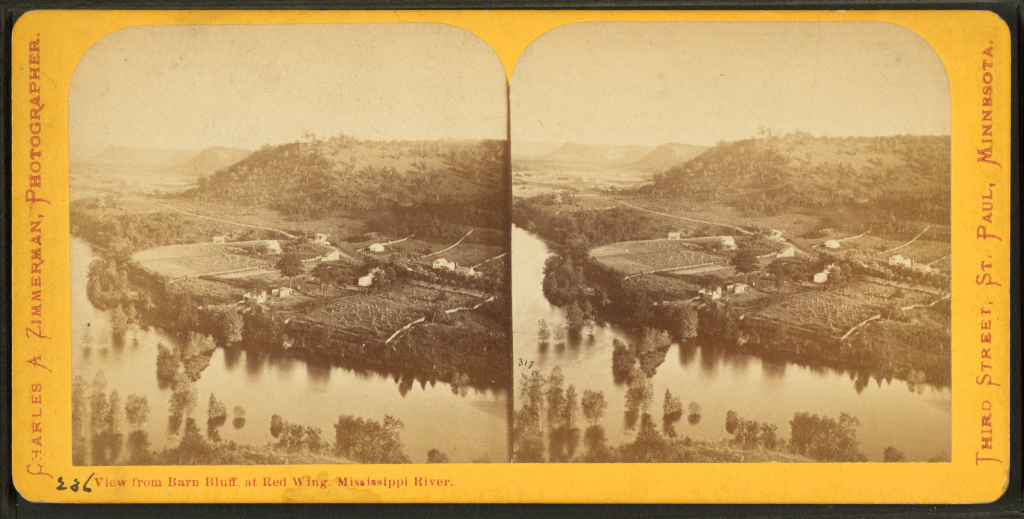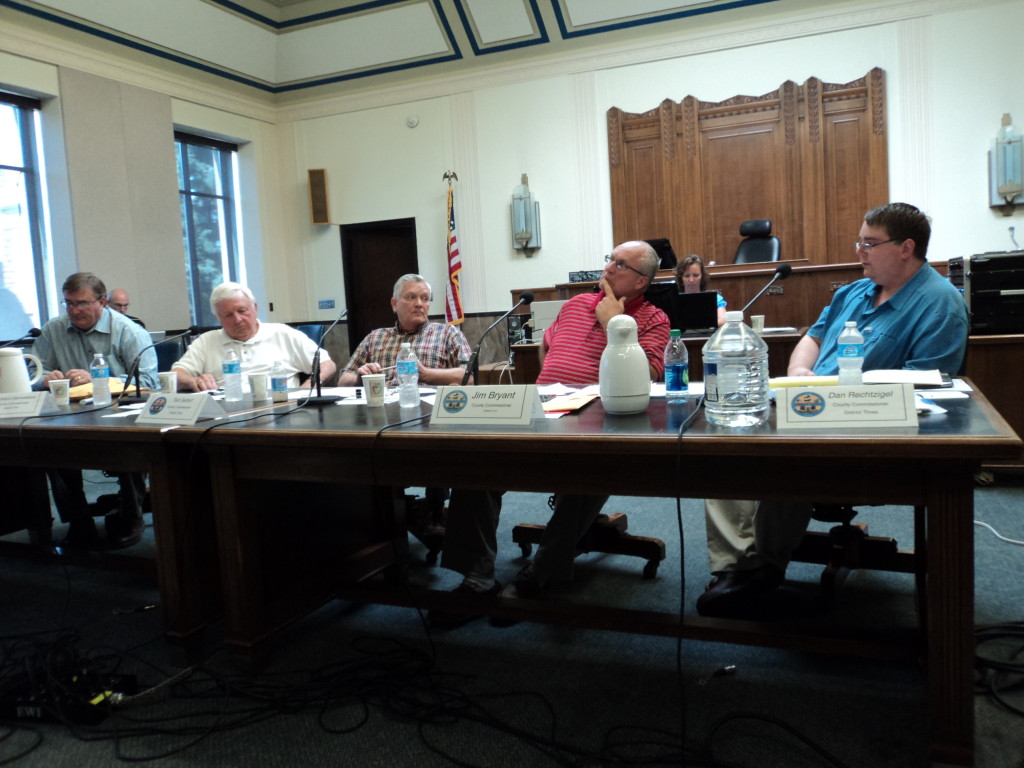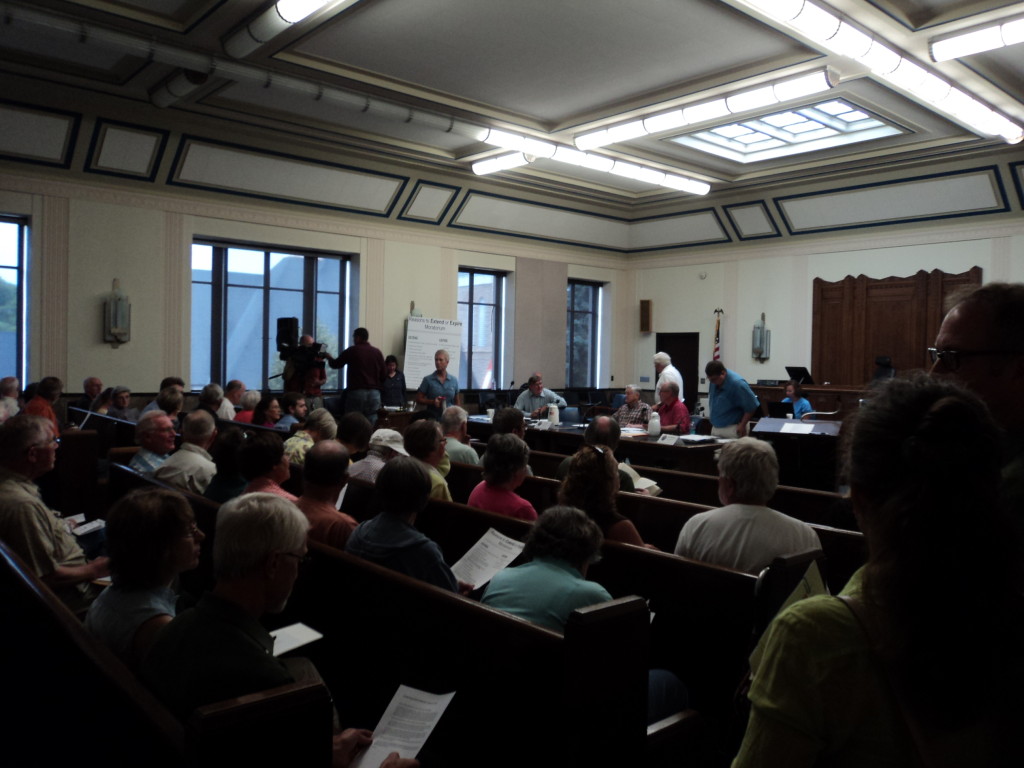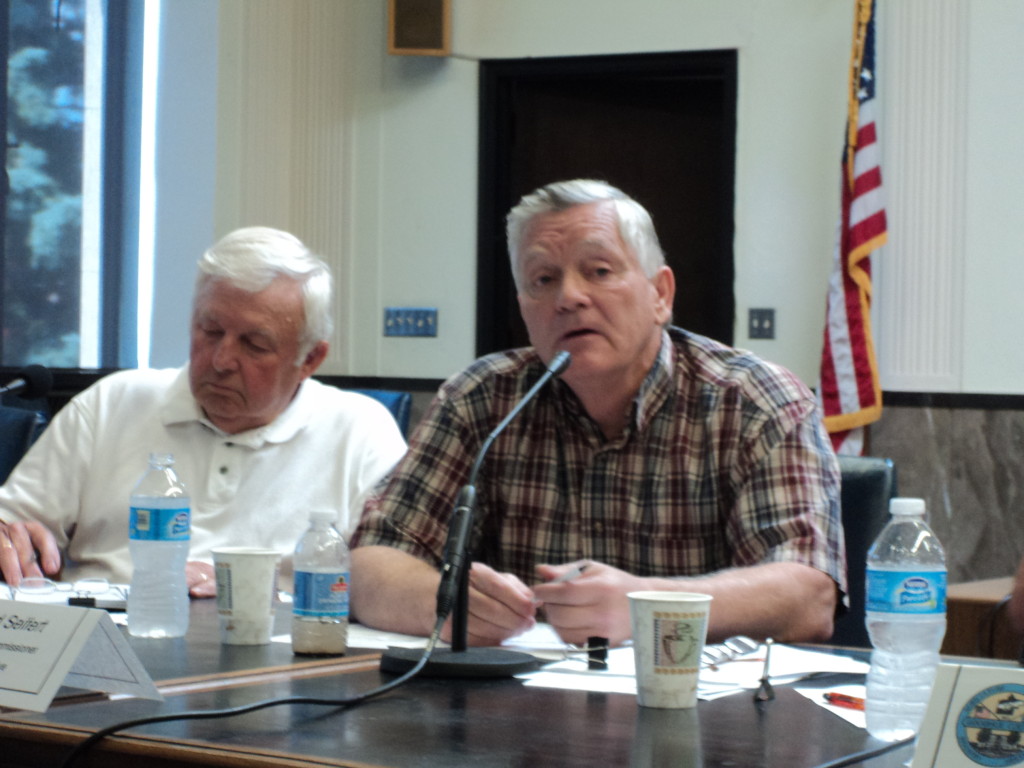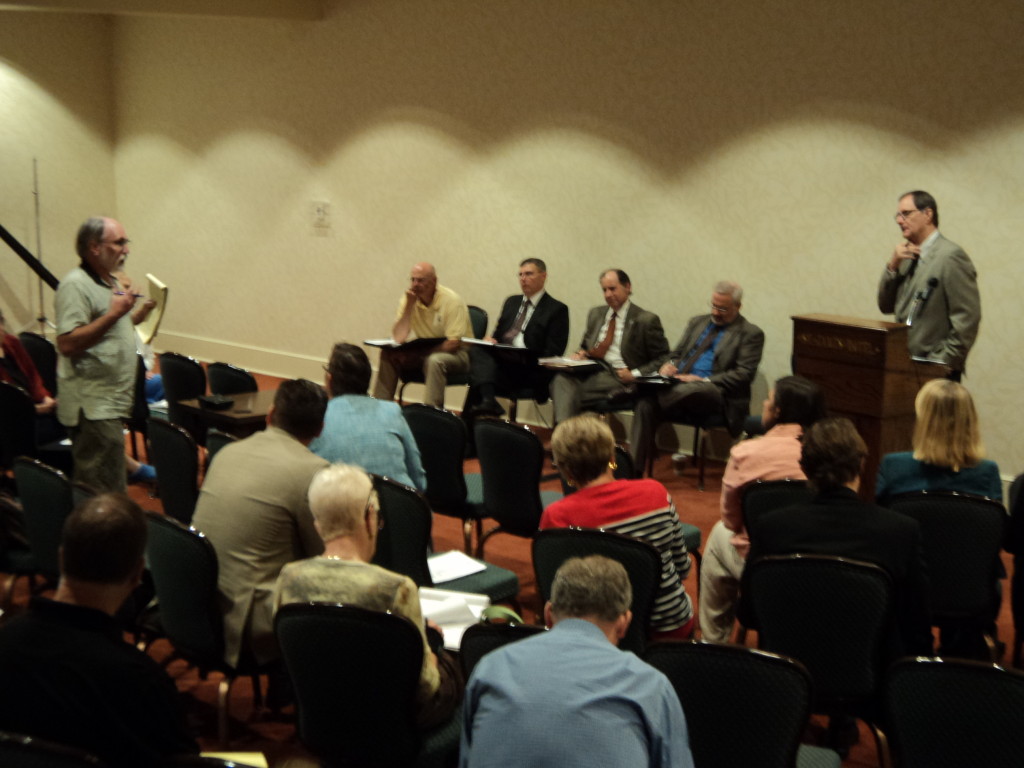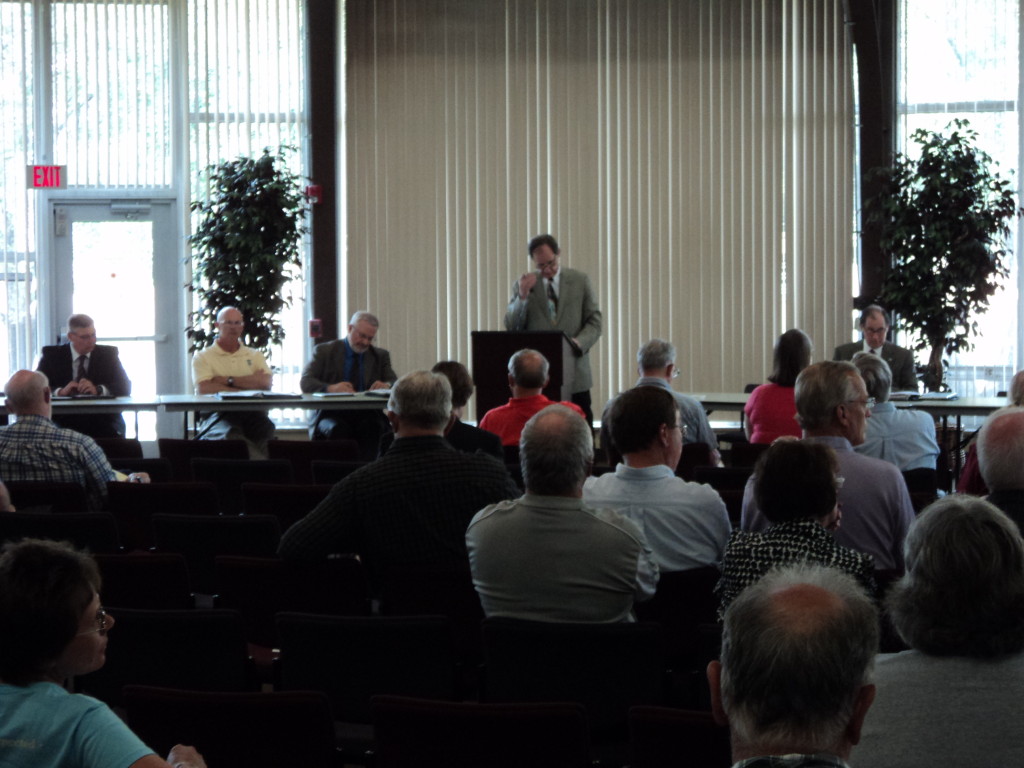Locals must adopt sand Standards & Criteria
August 17th, 2013
Local governments need to get involved in the development of frac sand mining Standards and Criteria, and once the state develops them, local governments must ADOPT them and incorporate them into their ordinance in order for the Standards and Criteria to apply.
The frac sand mining bill passed last year required that the Environmental Quality Board develop Standards and Criteria, in specific categories, for silica sand mining, processing and transportation by October 1 2013, that the Board SHALL develop, “in consultation with local units of government,” the standards and criteria, and then… HERE’S THE CATCH:
These standards and criteria may be used by local units of government in developing local ordinances.
“MAY” … not SHALL.
Our job: Push local governments to “consult” and to adopt standards and criteria, either the EQB’s or more stringent ones!
And there’s a job for local units of government: Work “in consultation” with the state to develop the standards and criteria for mining, processing, and transporting silica sand,” and then the local units of government need to ADOPT them. They won’t just automatically apply.
Please urge your local governments to get involved with the EQB’s process:
1) CONSULTATION — Ask local governments to join in the EQB’s process, hold public meetings in the area, weigh in with suggestions for language — quickly, before draft is done in September. This is where input has the most impact Send input to: Jeff.Smyser@state.mn.us; bob.patton@state.mn.us; kate.frantz@state.mn.us; dave.frederickson@state.mn.us
2) ADOPT STANDARDS AND CRITERIA. The EQB’s Standards and Criteria don’t apply automatically — they must be adopted into local ordinances. Adopt the Standards and Criteria developed by the EQB, and adopt stricter standards where desired.
Here are some specific suggestions filed with the state agencies on August 2 when they were in Red Wing and Winona:
You can use the CASM Comments as a guide and write your own standards on issues important to you!
LOCAL GOVERNMENT CONTACT INFO – just cut & paste for your area:
Goodhue County:
ronald.clifford.allen@gmail.com; jcbryant@kmwb.net; rudy396@yahoo.com; rsamuelson@sleepyeyetel.net; ted.seifert@hiawathamedical.com; steve.betcher@co.goodhue.mn.us; scott.arneson@co.goodhue.mn.us
Red Wing’s City Council & Staff:
dan.bender@ci.red-wing.mn.us;jsebion3@gmail.com, lisa.bayley@ci.red-wing.mn.us; deanhove@charter.net ; michael.v.schultz@charter.net; peggy.rehder@ci.red-wing.mn.us; ralph.rauterkus@ci.red-wing.mn.us; marilyn.meinke@ci.red-wing.mn.us; kay.kuhlmann@ci.red-wing.mn.us
Wabasha County:
rhall@co.wabasha.mn.us; droschen@co.wabasha.mn.us; dspringer@co.wabasha.mn.us; mwobbe@co.wabasha.mn.us; dharms@co.wabasha.mn.us; jnordstrom@co.wabasha.mn.us; kkrause@co.wabasha.mn.us
Lake City:
jbeckman@ci.lake-city.mn.us; cadancinbear@yahoo.com; mspence1967@gmail.com; mattpowers55041@hotmail.com; philipgartner@embarqmail.com; marylouwaltman@embarqmail.com; gene.j.durand@gmail.com; rjohnson@ci.lake-city.mn.us; rkeehn@ci.lake-city.mn.us
Wabasha:
wabmayor@gmail.com; j.f.friedmeyer@gmail.com; stephenx@wabasha.net; b5c7ways@wabasha.net; lschoen83@gmail.com; retiredwabashachief@gmail.com; awharton@wabasha.net
Townships: Look up your township officials — there are SO many townships that you’re on your own here!
The EQB needs local governments’ input on so many things. Pick the ones you’re concerned about and let local officials know it’s important to you.
From Minnesota Session Laws 114, Sec. 91 (someday soon to be Minn. Stat. 116C.99):
The standards and criteria must include:
(1) recommendations for setbacks or buffers for mining operation and processing, including:
(i) any residence or residential zoning district boundary;
(ii) any property line or right-of-way line of any existing or proposed street or highway;
(iii) ordinary high water levels of public waters;
(iv) bluffs;
(v) designated trout streams, Class 2A water as designated in the rules of the Pollution Control Agency, or any perennially flowing tributary of a designated trout stream or Class 2A water;
(vi) calcareous fens;
(vii) wellhead protection areas as defined in section 103I.005;
(viii) critical natural habitat acquired by the commissioner of natural resources under section 84.944; and
(ix) a natural resource easement paid wholly or in part by public funds;
(2) standards for hours of operation;
(3) groundwater and surface water quality and quantity monitoring and mitigation plan requirements, including:
(i) applicable groundwater and surface water appropriation permit requirements;
(ii) well sealing requirements;
(iii) annual submission of monitoring well data; and
(iv) storm water runoff rate limits not to exceed two-, ten-, and 100-year storm events;
(4) air monitoring and data submission requirements;
(5) dust control requirements;
(6) noise testing and mitigation plan requirements;
(7) blast monitoring plan requirements;
(8) lighting requirements;
(9) inspection requirements;
(10) containment requirements for silica sand in temporary storage to protect air and water quality;
(11) containment requirements for chemicals used in processing;
(12) financial assurance requirements;
(13) road and bridge impacts and requirements; and
(14) reclamation plan requirements as required under the rules adopted by the
commissioner of natural resources.
Contact State Agencies about frac sand rules
August 16th, 2013
Calling all Minnesotans! Remember the meetings on August 2, where the state came to visit us in Red Wing and Winona, to talk and listen and learn what we expected for regulation of frac sand mining? We gave them an earful, here’s an example (Session Law 114 with the specifics is way down at the bottom):
CASM Comments August 2, 2013
… and now we need to ramp it up with some specifics. Here’s a TO DO list with emails further below.
1) Send agencies suggested language for Standards and Criteria (see CASM Comments for hints). A draft will be released in September. Now, as they’re drafting it, is the time when comments really matter and can have some influence. Look at the CASM comments for the categories important to you for guidance, and add to it to strengthen it! Send to addresses below. This is more difficult and takes more time, so if it’s a struggle, focus on #2 and #3 to state agencies, and your city/township officials and County Board for #4.
2) Request that a Rulemaking Advisory Committee be formed for the MPCA, DNR and EQB rulemakings, again, to have input BEFORE the draft rules are issued for comment. Commissioner Stine had been thinking about the idea between Red Wing and in Winona suggested that there could be an advisory committee jointly addressing all for rulemaking proceedings. That’s a good option! See the CASM Comment cover letter for language and send a request for an Advisory Committee to the addresses below, .
3) Request that NO permitting be allowed until Standards and Criteria and Rulemaking is complete. Send this to everyone.
4) Urge each of our local governments to get active in the state’s process. This isn’t something “they” do, it’s something “WE” do, government of the people, and it’s our job to help get these Standards and Criteria and rulemakings done (action NOW, not complain about it after it’s all over when nothing can be done).
Who needs to email them? Everyone!
Why get comments in before the drafts are issued? Because once the drafts are issued, they’re pretty much engraved in stone and it’s very hard to get a change. It may be possible in the Standards and Criteria, but not in rulemaking, because agencies are unable to make any substantive changes once the draft has been issued for comment.
What does a Rulemaking Advisory Committee do? They develop and propose language for the rules (I’ve been on 4 or 5 related to utility issues) at a time when input is encouraged AND utilized! Without a rulemaking committee, it’ll just be input and pressure from industry lobbyists or those who take the initiative to send suggestions in. Get in where it counts!
Why bother? Because they HAVE been receptive to requests to facilitate public participation and commenting opportunities, because Committees are a normal part of a rulemaking process that has significant interest, and I’d say that frac sand mining has significant interest.
When you send an email, put either “EQB Standards & Criteria, Minn. Stat. 116C.99” or “Appoint Rulemaking Advisory Committees for frac sand mining” so they know what it’s about, and send to:
Suggested language for EQB Standards and Criteria under Minn. Stat. 116C.99 (see categories below):
Jeff.Smyser@state.mn.us; bob.patton@state.mn.us; kate.frantz@state.mn.us; dave.fredrickson@state.mn.us
Request for Rulemaking Advisory Committees regarding frac sand mining:
DNR – heather.arends@state.mn.us; tom.landwehr@state.mn.us
MPCA – nathan.cooley@state.mn.us; john.stine@state.mn.us
EQB – Jeff.Smyser@state.mn.us; bob.patton@state.mn.us; kate.frantz@state.mn.us; dave.fredrickson@state.mn.us
Now is the time to get involved in the state process, the train is about to leave the station!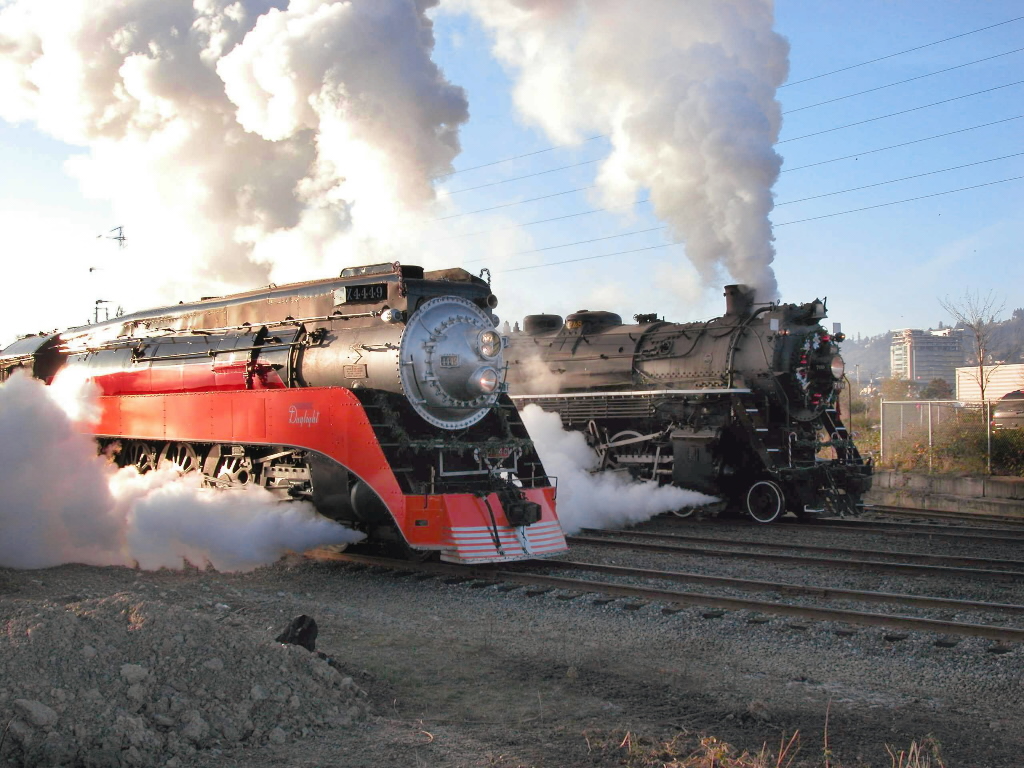
What are they looking at for Standards and Criteria? Here’s what Ch. 114, Section 91 says:
Subd. 2. Standards and criteria. (a) By October 1, 2013, the Environmental Quality Board, in consultation with local units of government, shall develop model standards and criteria for mining, processing, and transporting silica sand. These standards and criteria may be used by local units of government in developing local ordinances. The standards and criteria shall be different for different geographic areas of the state. The
unique karst conditions and landforms of southeastern Minnesota shall be considered unique when compared with the flat scoured river terraces and uniform hydrology of the Minnesota Valley. The standards and criteria developed shall reflect those differences in varying regions of the state. The standards and criteria must include:
(1) recommendations for setbacks or buffers for mining operation and processing, including:
(i) any residence or residential zoning district boundary;
(ii) any property line or right-of-way line of any existing or proposed street or highway;
(iii) ordinary high water levels of public waters;
(iv) bluffs;
(v) designated trout streams, Class 2A water as designated in the rules of the Pollution Control Agency, or any perennially flowing tributary of a designated trout
stream or Class 2A water;
(vi) calcareous fens;
(vii) wellhead protection areas as defined in section 103I.005;
(viii) critical natural habitat acquired by the commissioner of natural resources under section 84.944; and
(ix) a natural resource easement paid wholly or in part by public funds;
(2) standards for hours of operation;
(3) groundwater and surface water quality and quantity monitoring and mitigation plan requirements, including:
(i) applicable groundwater and surface water appropriation permit requirements;
(ii) well sealing requirements;
(iii) annual submission of monitoring well data; and
(iv) storm water runoff rate limits not to exceed two-, ten-, and 100-year storm events;
(4) air monitoring and data submission requirements;
(5) dust control requirements;
(6) noise testing and mitigation plan requirements;
(7) blast monitoring plan requirements;
(8) lighting requirements;
(9) inspection requirements;
(10) containment requirements for silica sand in temporary storage to protect air and water quality;
(11) containment requirements for chemicals used in processing;
(12) financial assurance requirements;
(13) road and bridge impacts and requirements; and
(14) reclamation plan requirements as required under the rules adopted by the commissioner of natural resources.
And as for rulemakings, here’s what Section 105 says:
Sec. 105. RULES; SILICA SAND.
(a) The commissioner of the Pollution Control Agency shall adopt rules pertaining
to the control of particulate emissions from silica sand projects. The rulemaking is exempt
from Minnesota Statutes, section 14.125.
(b) The commissioner of natural resources shall adopt rules pertaining to the
reclamation of silica sand mines. The rulemaking is exempt from Minnesota Statutes,
section 14.125.
(c) By January 1, 2014, the Department of Health shall adopt an air quality
health-based value for silica sand.
(d) The Environmental Quality Board shall amend its rules for environmental
review, adopted under Minnesota Statutes, chapter 116D, for silica sand mining and
processing to take into account the increased activity in the state and concerns over the
size of specific operations. The Environmental Quality Board shall consider whether
the requirements of Minnesota Statutes, section 116C.991, should remain part of the
environmental review requirements for silica sand and whether the requirements should
be different for different geographic areas of the state. The rulemaking is exempt from
Minnesota Statutes, section 14.125.
EFFECTIVE DATE.This section is effective the day following final enactment.
Goodhue County extends moratorium
August 6th, 2013
Today the Goodhue County Board voted to extend the silica sand mining moratorium for another six months. A very disturbing point learned in their deliberations was that the County Board had NOT been informed of the Save the Bluffs’ Application for Zoning Ordinance Amendment before the meeting, staff had not told them. Can you believe!?!?!?!
It was standing room only in the big former courtroom. Before the meeting started:
There was great testimony, people have a good handle on the facts, and laid out the reasons. For my part, I hammered on simple procedural realities:
- The Mining Study Committee has two more issues to address
- The state must develop standards and criteria, is on a compressed schedule and also working on four mandated rulemakings
- THE PRIMARY TASK ASSIGNED TO THE PLANNING COMMISSION HAS NOT BEEN COMPLETED!!! THE PAC WAS TO DETERMINE AREAS APPROPRIATE AND INAPPROPRIATE FOR FRAC SAND MINING AND HAS NOT!!
Each person testifying was urging the County to extend the moratorium. The state, on Friday, sent a clear message to extend the moratorium so state could get its legislatively mandated work done (note not all of the County Board members bothered to show up for the state agency meeting here last Friday).
Comm. Siefert gave a most uninformed lecture about how we need energy, “remember lining up at the gas pumps?” Hard to stomach… he demonstrated he knows nothing about the natural gas market, even MPR noted that “demand for the sand used for hydraulic fracturing has slowed in recent months.” He also seems to not connect the explosion in Lac Megantic last month with the sort of cars that go through downtown Red Wing daily. He represents the 5th District, not up for re-election until 2017… that’s our old one in Red Wing, and I’m both glad and sad, because it’d be a lot easier to work to elect someone reasonable if we were still in his district. He’s got to go.
I also strongly disagreed with County Attorney Betcher’s discussion of state mandates and implications and applications to county permitting. The county should not open the doors to applications before the state standards and criteria are complete, expected October 1, 2013, and the FOUR rulemaking proceedings, one each at DNR and MPCA and two at EQB. That will take a long time, and the County better show up for that.
It was clear from Comm. Rechtzigel’s preamble that he was doing a set up for a lesser time than one year, and they voted down the one year, and it was only a matter of seconds, up pops the 90 day option, which Comm. Allen turned into a friendly amended 6 month moratorium and after they got Comm. Samuelson caught up, it was approved. A little birdie suggested that the 90 day had been agreed to, and that Comm. Allen raised them and pulled it off — I’m inclined to agree — it was clear another motion would follow, that much I was betting on. Better than nothing, but not adequate. I predict we’ll all be back after 6 months because the state will not have its rulemaking completed.
Part of their story was off base:
Some Goodhue County residents have said more studies are needed to assess the affect of mining on roads, safety and quality of life.
The County assigned tasks to the Mining Study Committee, and they did not complete the work, as was discussed at the hearing. There is also the Save the Bluffs application pending:
KARE 11:
After the hearing, I wrote them a quick missive:
County Board Members:
I was stunned to learn at the hearing today that the County Board had not been advised of the Save the Bluff’s Application for Zoning Ordinance Amendment. That something so relevant to today’s decision was withheld from you by county staff is very disturbing.
That said, I’m grateful for today’s decision, which was indeed much like a “good” divorce settlement where everyone walks away not happy.
I do wonder where the others were who are walking away equally unhappy. How are the mining interests exerting their influence? They’re obviously not showing up at meetings. I’ll be pursuing this going forward.
Thank you for this decision which gives the County some time to complete the assignment to the MCS, to address where silica mining does and does not belong, and to address the District Overlay Application (attached).
Attached also is the CASM Comments August 2, 2013 to the EQB and other agencies regarding standards and criteria and rulemaking for those of you not present at Friday’s meeting. I hope the County will take full advantage of participation options, and would request the agencies form an Advisory Committee for increased input prior to the draft rules are released — the crucial time in rulemaking.
Thanks,
Carol A. Overland
as an individual and not in the course of representing any party
From the Rochester Post Bulletin:
Goodhue County extends silica moratorium
Posted: Tuesday, August 6, 2013 5:05 pm
Brett Boese, bboese@postbulletin.com
The vote came after more than two hours of coordinated public comment, largely from the Save the Bluffs opposition group. The county board rejected a one-year extension of the moratorium a decision that drew boos and jeers from the crowd of about 75.
![[]](http://d.oxsng.com/w/1.0/ri?ai=26716cd1-ce92-0b46-a41d-9115fa6ba3cf&ts=1fHNpZD01MzA1OHxyYWlkPTM1NWIwMWEwLWNhNTUtNDI5ZC1hYzc0LWQwMzhjODMwZDEwOXxhdWlkPTI2NDE5MHx1cj1hRVFqTThja1lHfGFzPTMwMHgyNTB8YWlkPTc2NzEwNHxwdWI9NjcxMzN8YXVtPURNSUQuV0VCfGxpZD00MzczNTl8dT0xfHQ9NHxyaWQ9OTQ2OGQyZGUtYjg0ZC00NTQ1LWIyNmQtMWExNmYyNmJiNjc0fG9pZD0xMjQ3MTR8Ym09QlVZSU5HLkdVQVJBTlRFRURWT0xVTUVHT0FMfHA9MHxwYz1VU0R8YWM9VVNEfHBtPVBSSUNJTkcuQ1BNfHJ0PTEzNzU4MzM4ODd8cHI9MHxhZHY9NjcyNzY)
Many expected the county board to simply let the moratorium expire. The board’s mining study group and planning commission previously recommended that course. However, board chairman Dan Rechtzigel credited a persistent campaign from the opposition group with changing his mind.
Yesterday in Red Wing and Winona
August 3rd, 2013
Yesterday two meetings were held by the the Environmental Quality Board, Dept. of Natural Resources, Minnesota Pollution Control Agency, Dept. of Health, and Dept. of Transportation, and the Gov.’s Ellen Anderson, joined by a large crew of agency staff and a good sampling of county, city and township officials — good to see a crew from Red Wing and Goodhue County. The MPCA’s Stine has been on Alan’s list for some time, and we’ve been dealing with him a lot lately, the EQB and Ellen Anderson too, and I think it helps to be able to have some history with them and get right to business.
A good time was had by all. The agency reps appeared more engaged and tracking than they usually are, and you could dance to it — I’ll give it a 98. But come on… not even coffee… granted I was up at “too early o’clock” to finish my handout, but… zzzzzzzzzzzz…
Notice of these meetings was a problem, or rather, lack of notice, because this was a stage where public participation is crucial — they need to know we care and can contribute. They wanted it kept to “local governments,” but that doesn’t cut it, this is a public meeting about an immediate and high-profile issue. It must be open. There’s no excuse for keeping it under wraps.
The most important thing I heard was repeated comments by Jon Linc Stine, MPCA, in particular, was whether local governments had taken advantage of the new legislative option to extend a moratorium. At the Red Wing meeting, Goodhue County had Lisa Hanni responding for the county. Hanni was dodging and weaving on that moratorium question, stating that they acted based on the law as it was, that they had to get their work done on the timeline of their moratorium. I’d sure have appreciated the addition of a simple statement that the County would take that suggestion of extending the moritorium under advisement!!! State agency officials have a typically hands off approach to local units of government, there are turf issues here, but the repeated questions and statements encouraging extension of the moratorium are as close to a direct statement as I’ve ever seen. There was encouragement to check with attorneys about extension, and encouragement for local governments to participate in this state process — they’re looking for input — so let’s give it to them!!!
Prior to the meeting, I drafted a letter and proposed standards and criteria, off the cuff suggestions to get the ball rolling. In the letter, there were two important requests:
- Appointment of a rulemaking Advisory Committee.
- No state permitting of silica sand mines until Standards & Criteria AND rules are completed.
Here are the Comments of Winona County Citizens Concerned About Silica Mining:
CASM Comments August 2, 2013
At the Red Wing meeting, I was particularly encouraged to note that Richard Peterson from a township in Le Sueur County was there to discuss what it’s like to live with a mine next door. Specific points were that despite a provision for an “annual review,” the community received no notification that the annual review was happening! Blasting was an issue because they are blasting constantly. Reclamation is not keeping up, and they’re piling up large piles, 600 FOOT PILES, and not capping it, so the wind is blowing it all around. I’m glad someone near the Minnesota River mines was here, and hope the state will schedule meetings there, and also near the St. Croix mines. It’s not just SE Minnesota, folks, this is a far broader problem (map from StPPP)

James Riddle spoke at the Winona meeting. He’s from Winona, and has recently been appointed to the MPCA Citizens Board, and had quite a back and forth regarding trout streams, protected areas, and groundwater.
One thing they’ll be doing is providing notice to local governments, AND I HOPE THE PUBLIC, of pre-application meetings with the agencies so that local governments will have a heads up. That’s important because if there is an application to a local government, there’s only a 60 day window to act, and that’s just not enough time for permit review of something with potential for such extensive impacts.
Something that came up repeatedly was counties ability to work together on road issues, to jointly institute road impact fees, and the DOT will be digging up more information about this. That’s good because road impacts is an issue mandated for Standards and Criteria development.
Also, reclamation was a recurring issue, and the importance of reclamation standards and requirements to keep up with destruction, and also to address dormancy, if the mine just sits, how long can it sit before reclamation kicks in.
It was a great relief to have the DOT COMMISSIONER there, that’s Charles Zelle. The DOT isn’t directly involved in rulemaking mandated in the statute, but transportation is such an important issue here with potential for major impacts. And the Commissioner is a better choice to represent the agency. At past meetings we’ve seen that awful Dave Christian, who was a frac sand mining toady, actively advocating for sand mining (he said he has family or friends involved in mining … own land? An inappropriate role as he wears his DOT hat. Perhaps, as with Dennis Egan, he should be fired.). Zelle was up on some issues, and others he needs to do some research, and particularly he should take a drive through Winona on the haul routes, look at the piles, and head down Highway 76 between Houston and Caledonia during hauling times!
Here’s the write up of the meetings in the Roch PB:
State enters silica sand fracas
John Weiss, weiss@postbulletin.com | Posted: Friday, August 2, 2013 9:30 pm
RED WING Louy Stambaugh wants state agencies to help stop many trucks loaded with silica sand from pounding past her Lake City home.
“We need more help, we need some more leverage because we’re small,” she said.
Tthe EQB is made up mostly of heads of the agencies, including those at the Friday meetings.
Comments of CASM for today
August 2nd, 2013
A little light reading — Comments, request to open the process, establish Advisory Committees for rulemaking, and 9 pages of specific language suggestions for 116C.99 Standards and Criteria:
Meetings today hosted by EQB, MPCA, DNR, MDH and DOT:
Red Wing
9:00 a.m.
St. James Hotel
Winona
1:30 p.m.
Winona State University
Tau Center Rotunda
511 Hilbert St
